Historically, the human form has
fascinated artists probably more than any other subject. Therefore it should
come as no surprise that the same fascination has extended to photography as
well.
While photography has generally been
accepted as a valid art form, photography of the nude to this day is struggling
with that recognition. In the view of
many, it is still looked upon as sleazy and objectionable, even harmful. No such objections exist when it comes to
paintings and sculptures. People
regularly visit art galleries. No
objections are generally voiced to see nude art there. Public spaces often display nude sculptures,
no objections there either. Yet nude
photographic art is still widely rejected.
Why?

Heinz Richter

Marlies Amling
I must emphasize that the key word
here is art. Many of the great
photographers have produced fine art nudes like Alfred Stieglitz, Edward
Steichen, Edward Weston, Man Ray, Helmut Newton…, just to mention a few. Of course, just as with other art forms, some
like Robert Mapplethorpe or Jeff Koonz for instance have pushed the envelope by
producing images that are questionable to some, but such work should not be
generalized and held against other serious photographers.
I often discuss this with my sister
who is a successful professional photographer in Germany. She is often in disbelief how much more
restricted photography of this type is in the US. For instance, in her studio she has three
different display windows for her work, one of which is usually dedicated to
fine art nude photography. That is
simply unthinkable in the US.

Marlies Amling
That brings up the question of what
constitutes fine art nude photography.
During my 13 years of teaching photography that question regularly came
up during class discussions. Of course
the definition of art in general is in the eye of the beholder. There are no clear cut instructions to be
had.
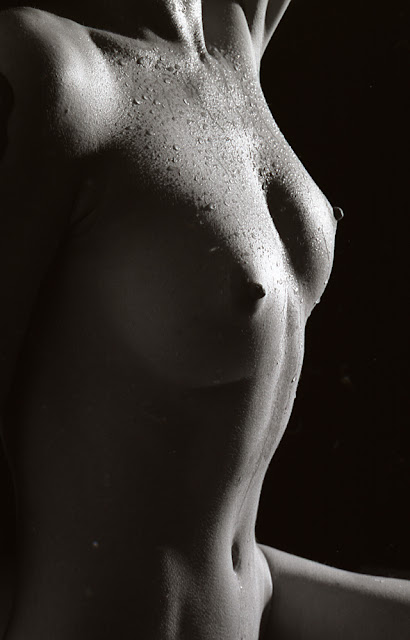
Heinz Richter

Marlies Amling
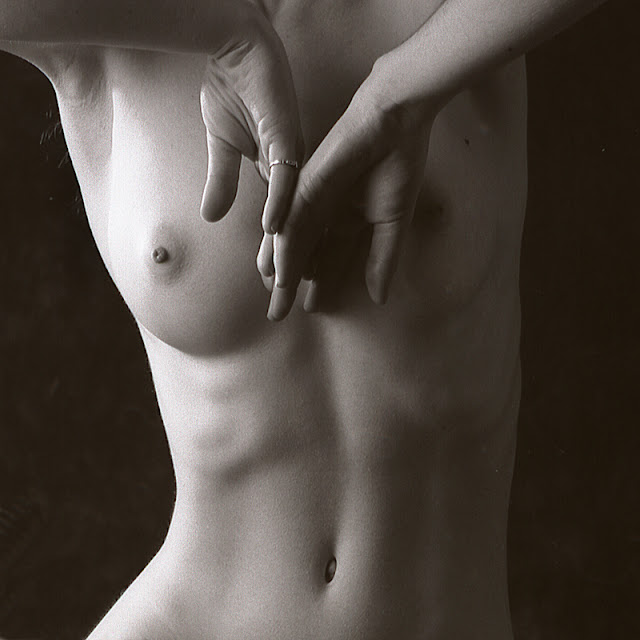
Heinz Richter
When it comes to fine art nude
photography, it is quite easy to take a photograph of a person without any
clothes. That, however, is not art and
should not be attempted to be presented as such. Instead the emphasis should not be so much on
nudity but on shape, form, lighting, design and composition.
That adds a considerable amount of
difficulty which is further emphasized that in most cases, a similar approach
with similar results has been done before.
In an interview, Kim Weston, grandson
of Edward Weston, when asked about his photography in comparison to his
grandfather’s said that he generally does not think about him. He went on to say whatever kind of photograph
he might attempt, “Edward has done it.”
He said he cannot take a landscape without being told that Edward has done
it, he virtually cannot photograph anything without the constant reminder that
Edward has done it.

Marlies Amling
The same is the case with fine art
nude photography. Regardless of the
outcome, someone most likely has done it before and someone most likely will do
it again in the future.
The best approach in my opinion is to
carefully plan a fine art nude photography session and then proceed without too
much attention to the work of other photographers. Then careful selection of only the best
examples with a healthy dose of self-criticism should give the assurance that
the shoot was successful. And don’t
forget, the old adage the practice makes perfect still applies.
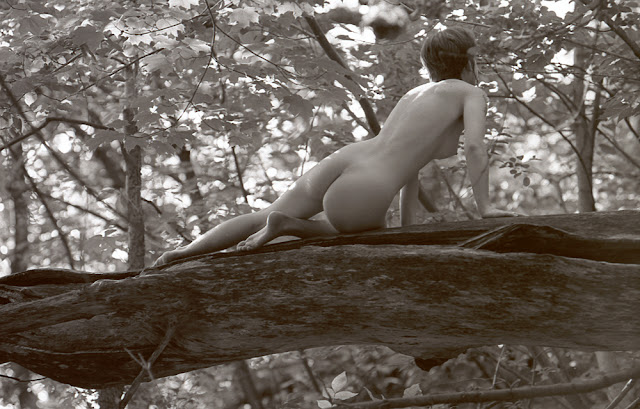
Heinz Richter
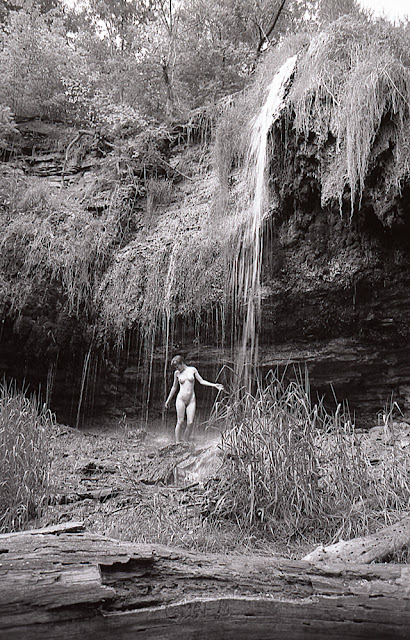
Heinz Richter

Heinz Richter

Heinz Richter
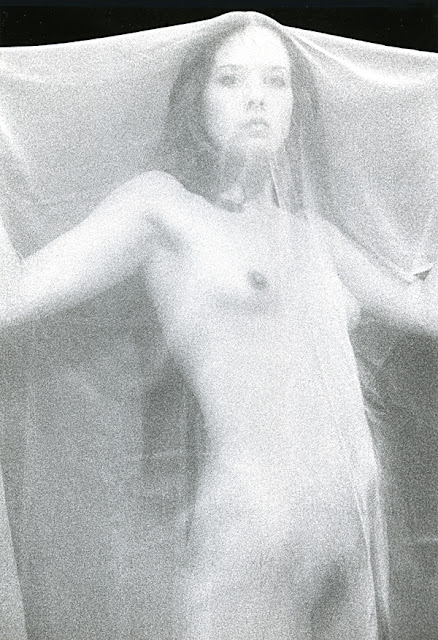
Blaine Schultz
As of late, Photoshop has opened
photographic possibilities that previously were impossible or at least very
difficult to achieve. But a lot of what
Photoshop has to offer, contrary to what many seem to assume, is not available
merely at the push of a button. Anyone
who has ever worked with Photoshop will agree that there is a considerable
learning curve; to master it certainly does not come overnight. However, one does not need to be afraid of
it. Photoshop definitely can be learned
to quite an extend simply by trial and error, although professional
instructions will definitely speed up the learning process.
Opinions about the system are
diverging to quite a degree. Some see it
as nothing more than a means to cover mistakes that occurred during
shooting. While many such mistakes can
definitely be corrected with Photoshop, it is not a panacea to everything that
might possibly go wrong. Just as in the
past, it is definitely advisable to strive to do everything correctly during a
shoot. That, of course, requires a
considerable base knowledge. As a matter
of fact, Photoshop should not al all be considered a means to become a good
photographer without knowing photography as such. Composition, posing, lighting, exposure
control, camera operation…., all are still as important today as they were in
the past and there is little that Photoshop can do to overcome those shortcomings.
Others criticize images modified with
the help of Photoshop as not original photography any longer. A colleague of mine recently claimed that
“real” photographs are only ones that are shown as they come out of the camera. I find that rather short sighted. Even in the past we used retouching and a
variety of darkroom trickery to alter the images as they came off the
negative. It was quite common to alter
the resulting photographs with changes in development, both film and paper. We used manipulative processes like
solarization, bas relief, posterization and a lot more to create images that
certainly differed substantially from what the lens put on film. Thus I find these criticisms quite out of
place.
The most important part of creating a
photographic image is the end result. How we arrive at that ultimately is
irrelevant.
Following are a number of images that
made extensive use of Photoshop, and while the results certainly required a lot
of work, it was ultimately a lot easier and less time consuming to create them
with the help of Photoshop than what would have been necessary to come up with
similar results during the “good old days.”
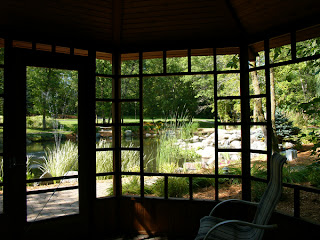
This Image is from an architectural photography assignment
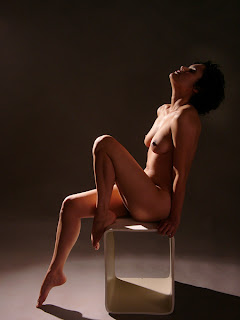
Studio shoot of a model with very similar lighting
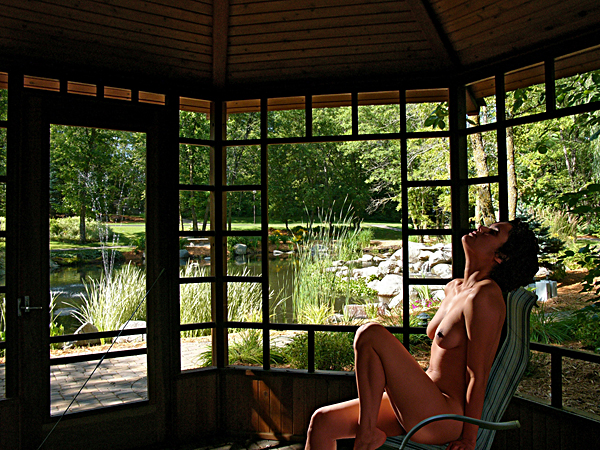
Combining the images rendered a great location shoot
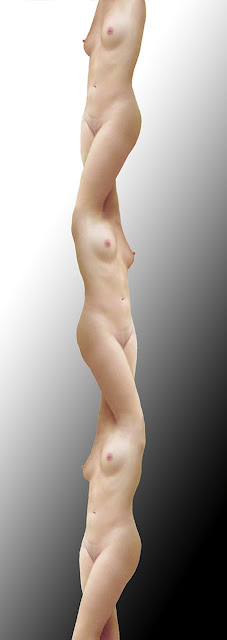
The original image unfortunately is
lost. This image is the result of
modifying the original and making three identical copies, one of which was
right and left reversed and combining them in the manner shown



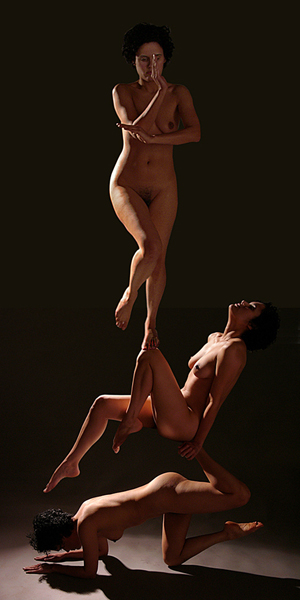
The three images above were combined to render this unusual result
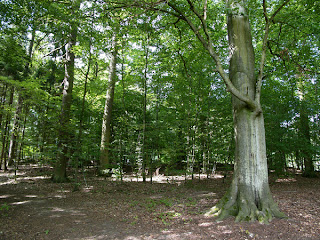

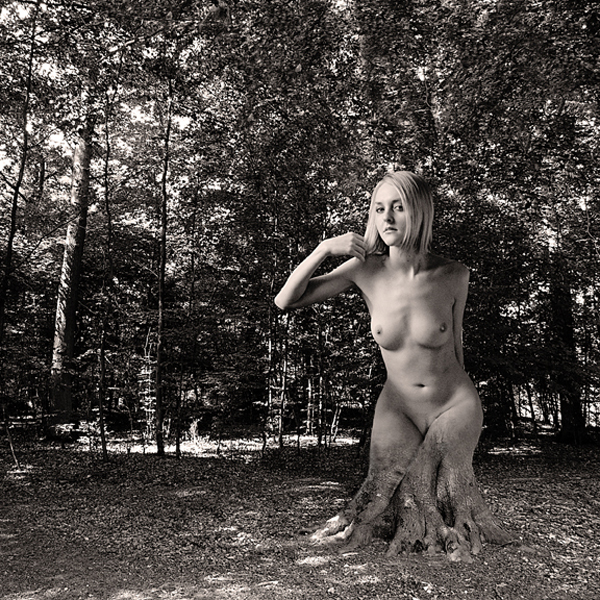
The two base images were combined with considerable modification into this result
As I mentioned before, most topics of
photography are quite difficult to do if one tries to find a different
approach, something that has not been done by other photographers before. That is especially the case with fine art
nude photography. The nude has always
been a very popular theme of the arts, including photography. Regardless of how one approaches the subject,
it probably has been done in one form or another before.
I had been looking for such a
different approach for a long time, and finally decided to use Photoshop to
reach that goal. The result is
“Photosculptures,” where I use photographs of sculptures and combine them with
photographs I have taken of models.
That might not appear to be
particularly difficult. After all,
Photoshop is used to alter images in just about any imaginary way. However, Photosculptures require a lot more
than just replacing part of the sculpture with a photograph of a different
person. It is important that the pose of
the model and the lighting coincide with that of the sculpture, however, it is
not my intention to produce a perfect copy of the original. Then the two images have to be carefully
matched in size. Finally, the transferred
image has to be modified to match the color and texture of the sculpture. All of this is not an easy process, and it is
very time consuming. But the end results
can be quite rewarding.
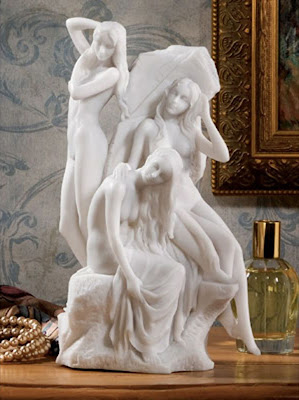
This is the most difficult sculpture I modified, because it consists of three different individuals
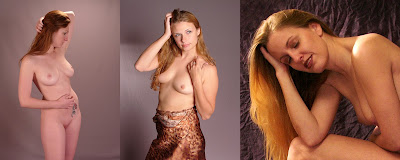
The original, raw images of the three models, all taken with Leica equipment.
The original photograph of the three
models required considerable modifications.
All had to be right and left reversed.
Then all three had to be matched in size to the size of the sculpture. In addition, the posing angle of the models
was altered to match that of the sculpture. Then, after masking off the
background, the images of each model were transferred to the photograph of the
sculpture. Then each model was altered
to match the white marble of the sculpture.
That included lowering the contrast of the facial features and the hair
to again match the sculpture.
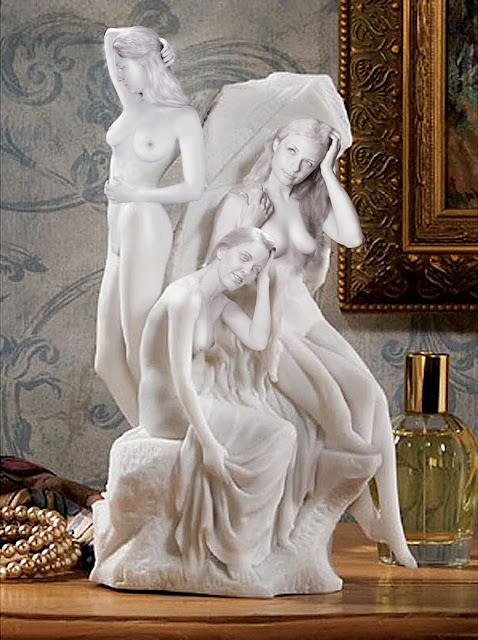
The finished Photosculpture
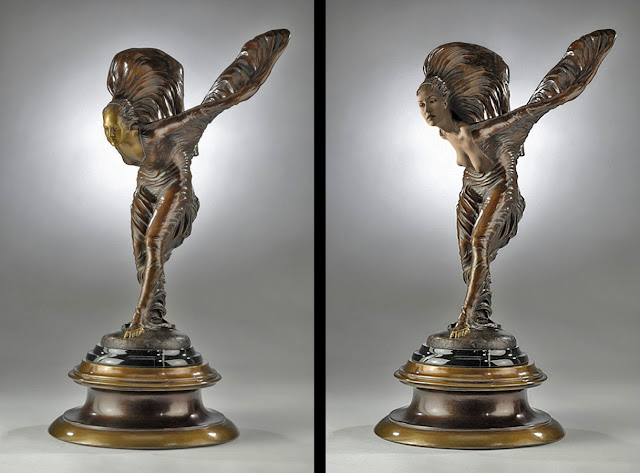
Original
Photosculpture
The original is a photograph of the
Rolls Royce hood ornament. Since the
pose of the model was not identical to that of the sculpture, it required
considerable modification of the hair flowing in the wind.
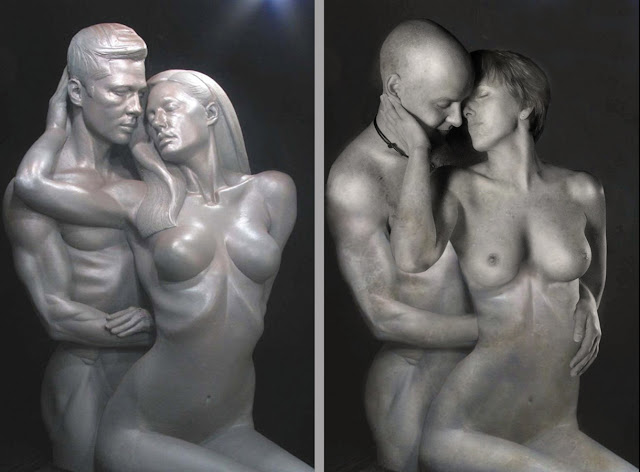
Original Photoscupture
This example required a considerable
amount of work. While the poses are
quite similar, the arms did not look right at all. It required to remove the hand on the arm of
the male which, in turn, required the arm of the male in the Photosculpture to
be lengthened. In addition, marble texture
and color was added to the Photosculpture.
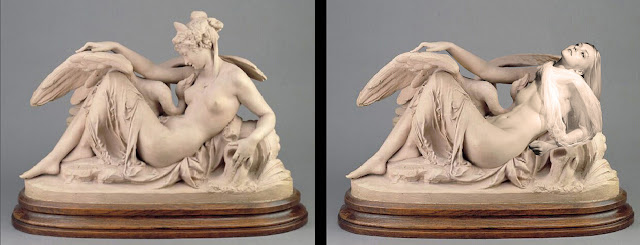
Original Photosculpture
Even though the pose of the original
and the model are quite similar, this example required a considerable amount of
detail work. The upper arm of the model
had to be lengthened to match up with that of the original sculpture. The wing of the swan had to be lengthened a
lot to bridge the void that otherwise showed in front of the model’s face. In addition the head of the swan needed to be
moved further from the neck. Since the
position of the left arm of the sculpture and the model are quite different, a
fair amount of reconstructive work was necessary to cover the arm of the
original sculpture.
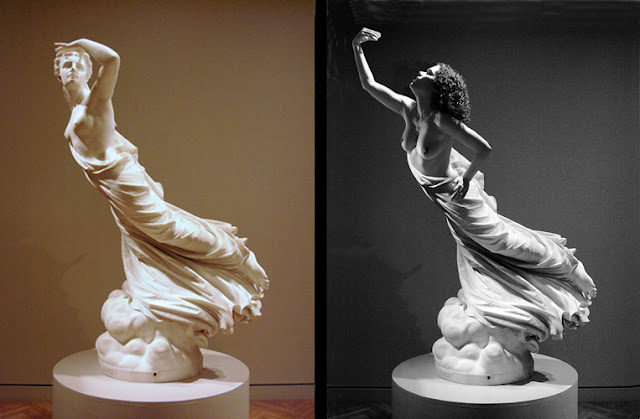
Original Photosculpture
This example was relatively easy to
convert. However, the strong lighting of
the original required close attention to the lighting of the model.
Accurate posing of the model
definitely makes this kind of work considerably easier. For that reason it is advisable to work with
experienced models that are able to strike a great variety of poses and do it
accurately once they see a sample of what pose is required. I have worked with most of the models shown
here on several occasions, with some of them even for several years. That has created a very good working
relationship which is also very helpful for this kind of work.
-------------------------------------------------------------------------------------------------------------------------------------------
Order: info@gmpphoto.com
Please make payment via PayPal to GMP
Photography
Click on ad to enlarge
Order: info@gmpphoto.com
Please make payment via PayPal to GMP
Photography
Click on ad to enlarge
Order: info@gmpphoto.com
Please make payment via PayPal to GMP
Photography




Great stuff. I am amazed by the lighting, posing and Photoshop skills displayed here. Thanks for posting.
ReplyDeleteThis post should have a warning that its content is NSFW and also potentially harmful to children.
ReplyDeleteWhy is it potentially harmful to children?
DeleteThat does not answer the question, but I am not surprised. I have had the same experience numerous times in the past. People are very quick to point to nude imges being harmful to children, but then fail to come up with a valid answer.
DeleteIf any of these posts are not safe for work (NSFW) depends on the attitude of the workplace in regard to art. I definitely reject the assertion that any of these images are potentially harmful for children. We are talking about the human form here, not some pornographic distortion of it. Why is it that photography is always handled differently in this regard than other forms of art. Is anybody requesting museums to post warning signs for their exhibit’s that show images or statues depicting the human form? Are such sculptures in public places required to do the same? I am a member of MIA, the Minneapolis Institute of Arts. I regularly see groups of school children visit the place, as a matter of fact, they regularly have a special children’s day. There are no restrictions as to which areas of the museum are open to the children, including the photography exhibits. Apparently there is no potential harm to children in a museum or in public places, why should this blog be any different?
Are you denying that nude images are harmful to children?
DeleteI usually don't answer a question with another question, but you still owe all the readers here an answer to my question as to why you think this is the case.
DeleteChildren are easily exposed to pornography and other deviant depictions of the human body.
DeleteAre you suggesting that any of the work shown in this article is pornographic in nature?
DeleteI never said that.
DeleteThen why do you want a warning on this site because the content might be harmful to children?
DeleteBy the way, are you asking for the same warnings at museums and other places that depict the human form by way of paintings, sculptures...?
DeleteHeinz, why waste time on this useless discussion? This individual obviously is incapable to distinguishing between art and porn. If this person has any kids, I actually feel quite sorry for them, because they obviously are growing up with some very twisted ideas about what is acceptable art and what is not. I also wonder why this person even looked at this site, the headline should have put all kinds of red flags up for him or her.
DeleteIt is obvious that segments of the US population are still mired in their puritanical past. I for one think the pictures in this article are works of art, not unlike what we see in books and other publications from famous photographers the world over. I hope that the nay sayers will answer your question of why such photographs are supposedly harmful and why other works of nude art, as displayed in museums all over the world are not.
ReplyDeleteI have asked this question on many occasions and, so far, have never received a valid answer.
DeleteI am sure you won't, especially in view of the fact that one of the major proponents of this nonsense, the Catholic church, is also one of the main culprits of actual sexual abuses. Not only that, but they continue to sweep this under the rug in most cases. Their filthy abuses make the publication of art, like on these pages, even more of a non-issue, because it begs the question of what is more harmful, pedophiles in positions of authority in a church, or the publication of art?.
DeleteMan, if you consider anything here to be porn, there is something wrong with you.
ReplyDeleteIt's not the photographs here, or elsewhere that are harmful to children, it is the puritanical, out of touch with this world attitude of some individuals and parents that puts children into a utopian environment that has little connection to reality. Then, when these children enter the real world, they often have difficulties to cope with reality.
ReplyDelete